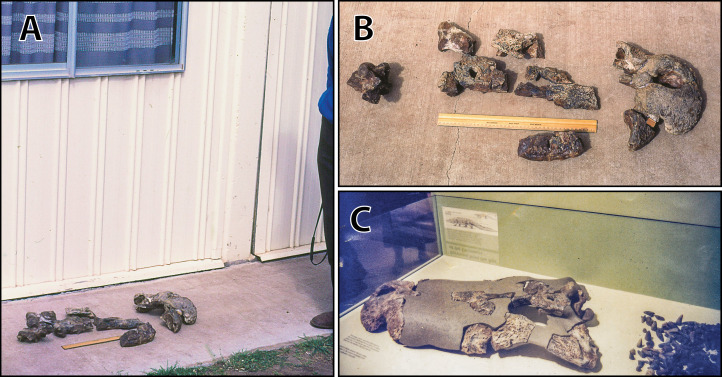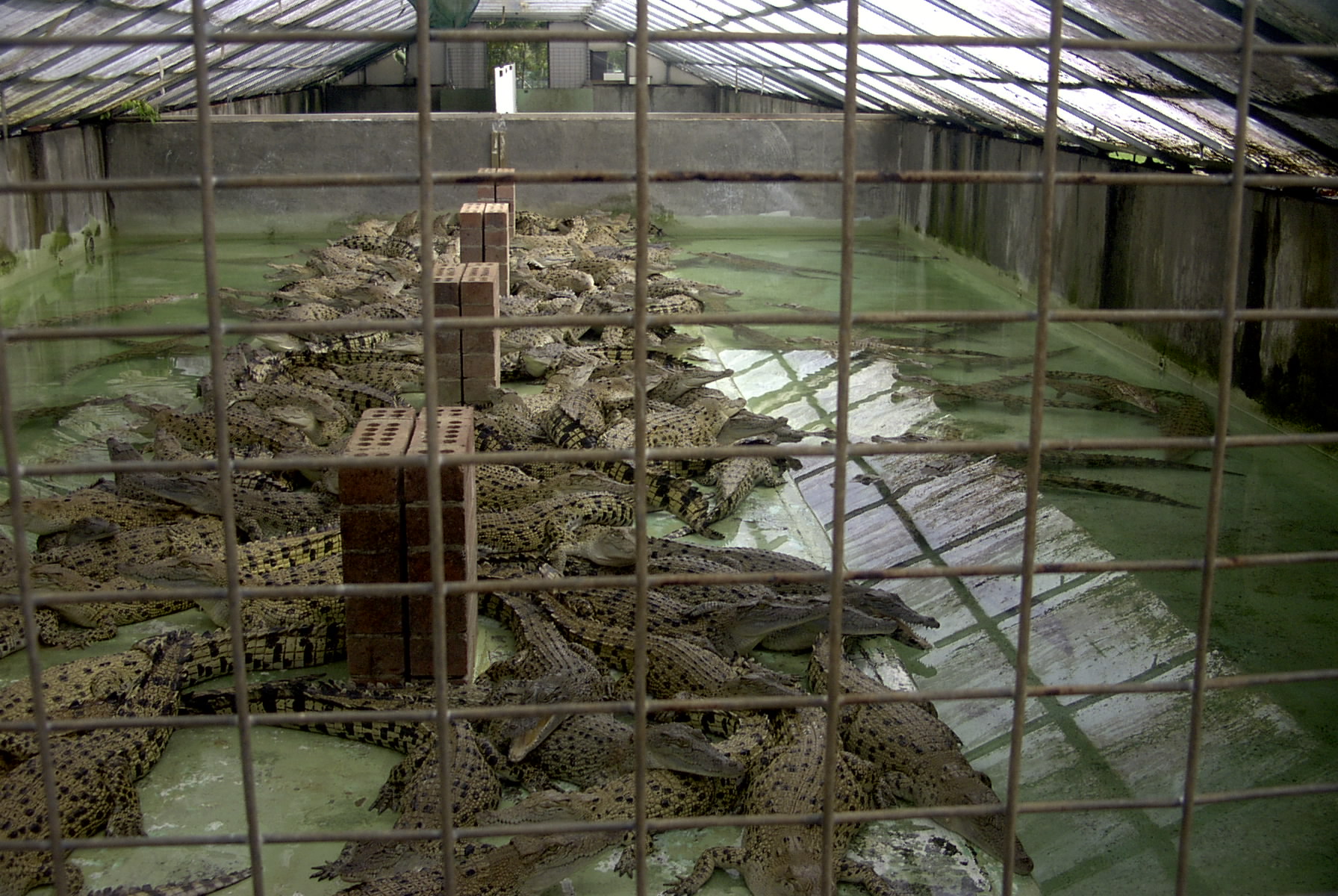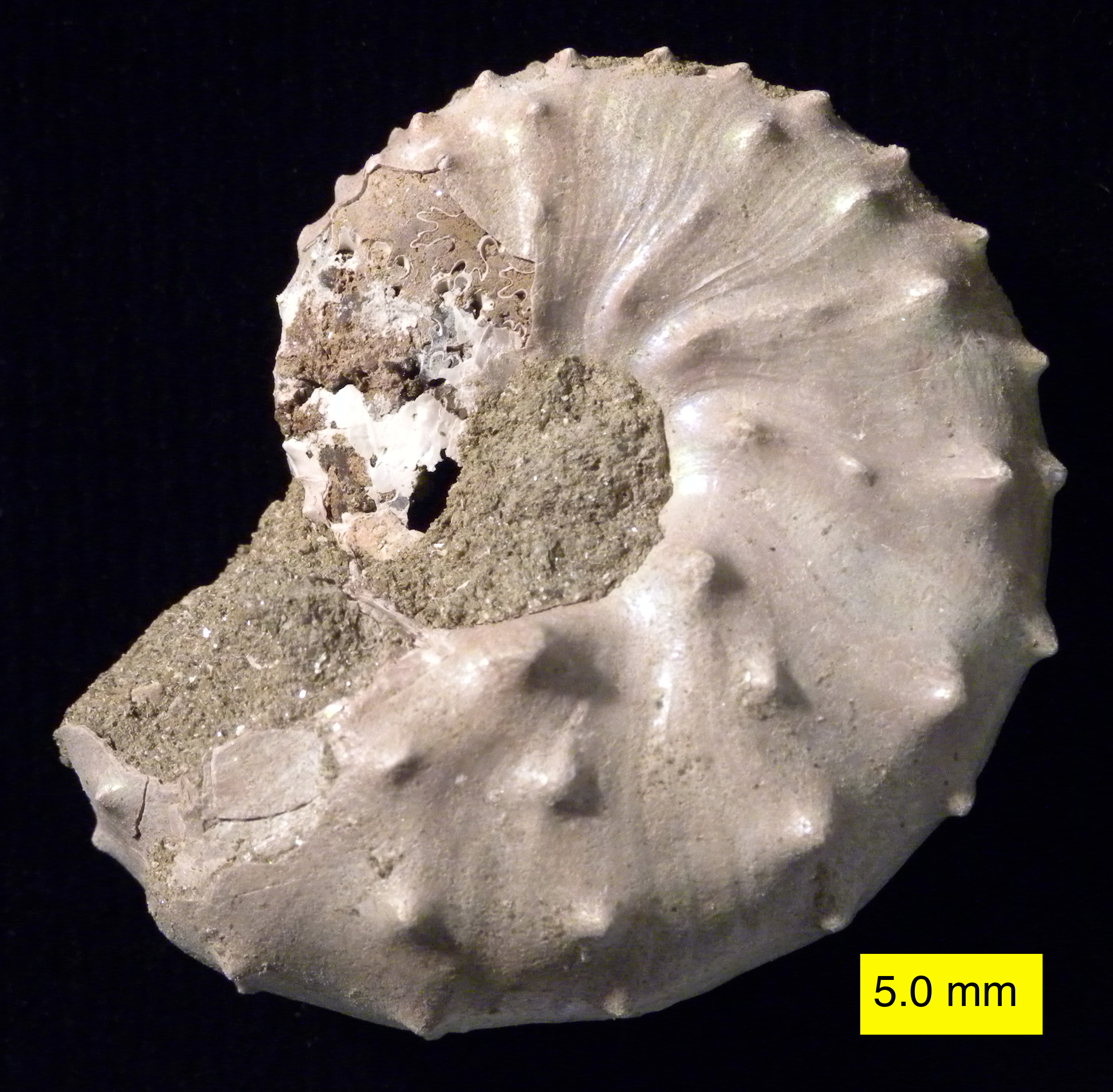|
Crocodilian
Crocodilia () is an Order (biology), order of semiaquatic, predatory reptiles that are known as crocodilians. They first appeared during the Late Cretaceous and are the closest living relatives of birds. Crocodilians are a type of crocodylomorph pseudosuchian, a subset of archosaurs that appeared about 235 million years ago and were the only survivors of the Triassic–Jurassic extinction event. While other crocodylomorph groups further survived the Cretaceous–Paleogene extinction event, notably sebecosuchians, only the crocodilians have survived into the Quaternary. The order includes the crocodile, true crocodiles (Family (biology), family Crocodylidae), the alligators and caimans (family Alligatoridae), and the gharial and false gharial (family Gavialidae). Although the term "crocodiles" is sometimes used to refer to all of these families, the term "crocodilians" is less ambiguous. Extant crocodilians have flat heads with long snouts and tails that are compressed on the si ... [...More Info...] [...Related Items...] OR: [Wikipedia] [Google] [Baidu] |
Mekosuchinae
Mekosuchinae is an extinct clade of crocodilians from the Cenozoic of Australasia. They represented the dominant group of crocodilians in the region during most of the Cenozoic, first appearing in the fossil record in the Eocene of Australia, and surviving until the arrival of humans: the Late Pleistocene on the Australian continent and during the Holocene in the Pacific islands of Fiji, New Caledonia and Vanuatu. Mekosuchine crocodiles are a diverse group displaying a great variety of shapes and sizes. Some taxa, like ''Baru'' and ''Paludirex'', were large semi-aquatic ambush hunters, though the two genera likely differed significantly in their hunting methods. The medium-sized ''Australosuchus'' may have been relatively cold-resistant and taxa like ''Trilophosuchus'' and ''Mekosuchus'' are renowned for their small size. One of the most distinct mekosuchines was ''Quinkana'', with its altirostral (deep) skull and blade-like serrated teeth. There is some question around the lifest ... [...More Info...] [...Related Items...] OR: [Wikipedia] [Google] [Baidu] |
Saltwater Crocodile
The saltwater crocodile (''Crocodylus porosus'') is a crocodilian native to saltwater habitats, brackish wetlands and freshwater rivers from India's east coast across Southeast Asia and the Sundaland to northern Australia and Micronesia. It has been listed as Least Concern on the IUCN Red List since 1996. It was hunted for its skin throughout its range up to the 1970s, and is threatened by illegal killing and habitat loss. It is regarded as dangerous to humans. The saltwater crocodile is the largest living reptile. Males can grow up to a weight of and a length of , rarely exceeding . Females are much smaller and rarely surpass . It is also called the estuarine crocodile, Indo-Pacific crocodile, marine crocodile, sea crocodile, and, informally, the saltie. A large and opportunistic hypercarnivore, hypercarnivorous apex predator, they ambush predator, ambush most of their prey and then drown or swallow it whole. They will prey on almost any animal that enters their territory, in ... [...More Info...] [...Related Items...] OR: [Wikipedia] [Google] [Baidu] |
Archosaur
Archosauria () or archosaurs () is a clade of diapsid sauropsid tetrapods, with birds and crocodilians being the only extant taxon, extant representatives. Although broadly classified as reptiles, which traditionally exclude birds, the cladistics, cladistic sense of the term includes all living and extinct relatives of birds and crocodilians such as non-avian dinosaurs, pterosaurs, phytosaurs, aetosaurs and rauisuchians as well as many marine reptile#Extinct groups, Mesozoic marine reptiles. Modern paleontologists define Archosauria as a crown group that includes the most recent common ancestor of living birds and crocodilians, and all of its descendants. The base of Archosauria splits into two clades: Pseudosuchia, which includes crocodilians and their extinct relatives; and Avemetatarsalia, which includes birds and their extinct relatives (such as non-avian dinosaurs and pterosaurs). Older definitions of the group Archosauria rely on shared morphology (biology), morphological ch ... [...More Info...] [...Related Items...] OR: [Wikipedia] [Google] [Baidu] |
Crocodylidae
Crocodiles (family Crocodylidae) or true crocodiles are large, semiaquatic reptiles that live throughout the tropics in Africa, Asia, the Americas and Australia. The term "crocodile" is sometimes used more loosely to include all extant members of the order Crocodilia, which includes the alligators and caimans (both members of the family Alligatoridae), the gharial and false gharial (both members of the family Gavialidae) as well as other extinct taxa. Crocodile size, morphology, behaviour and ecology differ among species. However, they have many similarities in these areas as well. All crocodiles are semiaquatic and tend to congregate in freshwater habitats such as rivers, lakes, wetlands and sometimes in brackish water and saltwater. They are carnivorous animals, feeding mostly on vertebrates such as fish, reptiles, birds and mammals, and sometimes on invertebrates such as molluscs and crustaceans, depending on species and age. All crocodiles are tropical speci ... [...More Info...] [...Related Items...] OR: [Wikipedia] [Google] [Baidu] |
Crocodile
Crocodiles (family (biology), family Crocodylidae) or true crocodiles are large, semiaquatic reptiles that live throughout the tropics in Africa, Asia, the Americas and Australia. The term "crocodile" is sometimes used more loosely to include all extant taxon, extant members of the order (biology), order Crocodilia, which includes the alligators and caimans (both members of the family Alligatoridae), the gharial and false gharial (both members of the family Gavialidae) as well as other extinct Taxon, taxa. Crocodile Measurement, size, Morphology (biology), morphology, behaviour and ecology differ among species. However, they have many similarities in these areas as well. All crocodiles are semiaquatic and tend to congregate in freshwater habitats such as rivers, lakes, wetlands and sometimes in brackish water and Seawater, saltwater. They are carnivorous animals, feeding mostly on vertebrates such as fish, reptiles, birds and mammals, and sometimes on invertebrates such as mol ... [...More Info...] [...Related Items...] OR: [Wikipedia] [Google] [Baidu] |
Reptile
Reptiles, as commonly defined, are a group of tetrapods with an ectothermic metabolism and Amniotic egg, amniotic development. Living traditional reptiles comprise four Order (biology), orders: Testudines, Crocodilia, Squamata, and Rhynchocephalia. About 12,000 living species of reptiles are listed in the Reptile Database. The study of the traditional reptile orders, customarily in combination with the study of modern amphibians, is called herpetology. Reptiles have been subject to several conflicting Taxonomy, taxonomic definitions. In Linnaean taxonomy, reptiles are gathered together under the Class (biology), class Reptilia ( ), which corresponds to common usage. Modern Cladistics, cladistic taxonomy regards that group as Paraphyly, paraphyletic, since Genetics, genetic and Paleontology, paleontological evidence has determined that birds (class Aves), as members of Dinosauria, are more closely related to living crocodilians than to other reptiles, and are thus nested among re ... [...More Info...] [...Related Items...] OR: [Wikipedia] [Google] [Baidu] |
Gharial
The gharial (''Gavialis gangeticus''), also known as gavial or fish-eating crocodile, is a crocodilian in the family (biology), family Gavialidae and among the longest of all living crocodilians. Mature females are long, and males . Adult males have a distinct boss at the end of the snout, which resembles an earthenware pot known as a ''ghara'', hence the name "gharial". The gharial is well adapted to catching fish because of its long, narrow snout and 110 sharp, interlocking teeth. The gharial probably evolved in the northern Indian subcontinent. Fossil gharial remains were excavated in Pliocene deposits in the Sivalik Hills and the Narmada River valley. It currently inhabits rivers in the plains of the northern part of the Indian subcontinent. It is the most thoroughly aquatic crocodilian, and leaves the water only for basking and building nests on moist sandbanks. Adults mate at the end of the cold season. Females congregate in spring to dig nests, in which they lay 20–95 e ... [...More Info...] [...Related Items...] OR: [Wikipedia] [Google] [Baidu] |
Pseudosuchia
Pseudosuchia, from Ancient Greek ψεύδος (''pseúdos)'', meaning "false", and σούχος (''soúkhos''), meaning "crocodile" is one of two major divisions of Archosauria, including living crocodilians and all archosaurs more closely related to crocodilians than to birds. Pseudosuchians are also informally known as "crocodilian-line archosaurs", in contrast to the "bird-line archosaurs" or Avemetatarsalia. Despite Pseudosuchia meaning "false crocodiles", the name is a misnomer as true crocodilians are now defined as a subset of the group. The clade Pseudosuchia is potentially equivalent to another term, Crurotarsi, even though the latter has a different, Node-based taxon, node-based definition: "all taxa the least inclusive clade containing ''Rutiodon carolinensis'' (Emmons, 1856), and ''Crocodylus niloticus'' (Laurenti, 1768)." Many paleontologists of the late 20th century took this proposal for granted, using Crurotarsi as the term for crocodilian ancestors. In 2011, a m ... [...More Info...] [...Related Items...] OR: [Wikipedia] [Google] [Baidu] |
Asiatosuchus
''Asiatosuchus'' is an extinct genus of crocodyloid crocodilians that lived in Eurasia during the Paleogene. Many Paleogene crocodilians from Europe and Asia have been attributed to ''Asiatosuchus'' since the genus was named in 1940. These species have a generalized crocodilian morphology typified by flat, triangular skulls. The feature that traditionally united these species under the genus ''Asiatosuchus'' is a broad connection or symphysis between the two halves of the lower jaw. Recent studies of the evolutionary relationships of early crocodilians along with closer examinations of the morphology of fossil specimens suggest that only the first named species of ''Asiatosuchus'', ''A. grangeri'' from the Eocene of Mongolia, belongs in the genus. Most species are now regarded as '' nomina dubia'' or "dubious names", meaning that their type specimens lack the unique anatomical features necessary to justify their classification as distinct species. Other species such as ''"A." ge ... [...More Info...] [...Related Items...] OR: [Wikipedia] [Google] [Baidu] |
Alligatoridae
The family (biology), family Alligatoridae of crocodylians includes alligators, caimans and their extinct relatives. Phylogeny The superfamily Alligatoroidea includes all crocodilians (fossil and extant) that are more closely related to the American alligator than to either the Nile crocodile or the gharial. This is a stem-based taxon, stem-based definition for alligators, and is more inclusive than the crown group Alligatoridae. As a crown group, Alligatoridae only includes the last common ancestor of all extant taxon, extant (living) alligators, caimans, and their descendants (living or extinct), whereas Alligatoroidea, as a stem-based group, also includes more basal (phylogenetics), basal extinct alligator ancestors that are more closely related to living alligators than to crocodiles or gavialids. When considering only living taxa (neontology), Alligatoroidea and Alligatoridae contain the same species. The simplified cladogram below shows Alligatoridae's relationships to o ... [...More Info...] [...Related Items...] OR: [Wikipedia] [Google] [Baidu] |
Planocraniidae
Planocraniidae is an extinct family of eusuchian crocodyliforms known from the Paleogene of Asia, Europe and North America. The family was coined by Li in 1976, and contains three genera, '' Boverisuchus'', '' Duerosuchus'' and '' Planocrania''. Planocraniids were highly specialized crocodyliforms that were adapted to living on land. They had extensive body armor, long legs, and blunt claws resembling hooves, and are sometimes informally called "hoofed crocodiles". Classification Prior to 2013, the term Pristichampsidae/Pristichampsinae was used for this group. However, the type specimen of '' Pristichampsus'' was found to be undiagnostic, and considered to be a ''nomen dubium''. As such, Brochu (2013) transferred the other species placed in ''Pristichampsus'' to '' Boverisuchus'', and resurrected Planocraniidae to replace Pristichampsidae/Pristichampsinae as the name for the clade. Brochu cladistically defined Planocraniidae as '' Planocrania hengdongensis'' and crocodyliform ... [...More Info...] [...Related Items...] OR: [Wikipedia] [Google] [Baidu] |
Cretaceous–Paleogene Extinction Event
The Cretaceous–Paleogene (K–Pg) extinction event, also known as the K–T extinction, was the extinction event, mass extinction of three-quarters of the plant and animal species on Earth approximately 66 million years ago. The event caused the extinction of all non-avian dinosaurs. Most other tetrapods weighing more than also became extinct, with the exception of some ectothermic species such as sea turtles and crocodilians. It marked the end of the Cretaceous period, and with it the Mesozoic era, while heralding the beginning of the current era, the Cenozoic. In the geologic record, the K–Pg event is marked by a thin layer of sediment called the Cretaceous–Paleogene boundary, K–Pg boundary or K–T boundary, which can be found throughout the world in marine and terrestrial rocks. The boundary clay shows unusually high levels of the metal iridium, which is more common in asteroids than in the Earth's crust. As originally proposed in 1980 by a team of scientists le ... [...More Info...] [...Related Items...] OR: [Wikipedia] [Google] [Baidu] |








